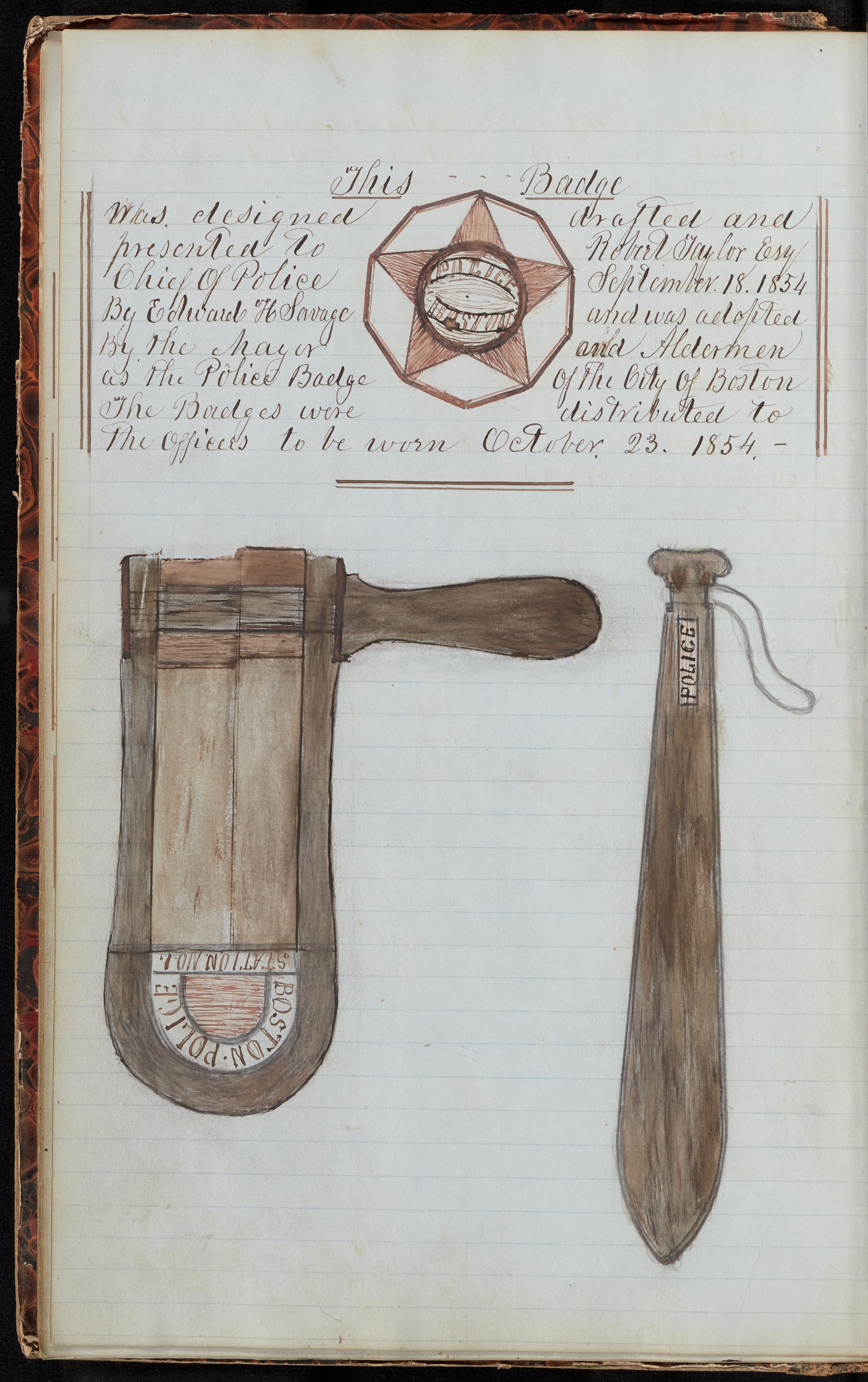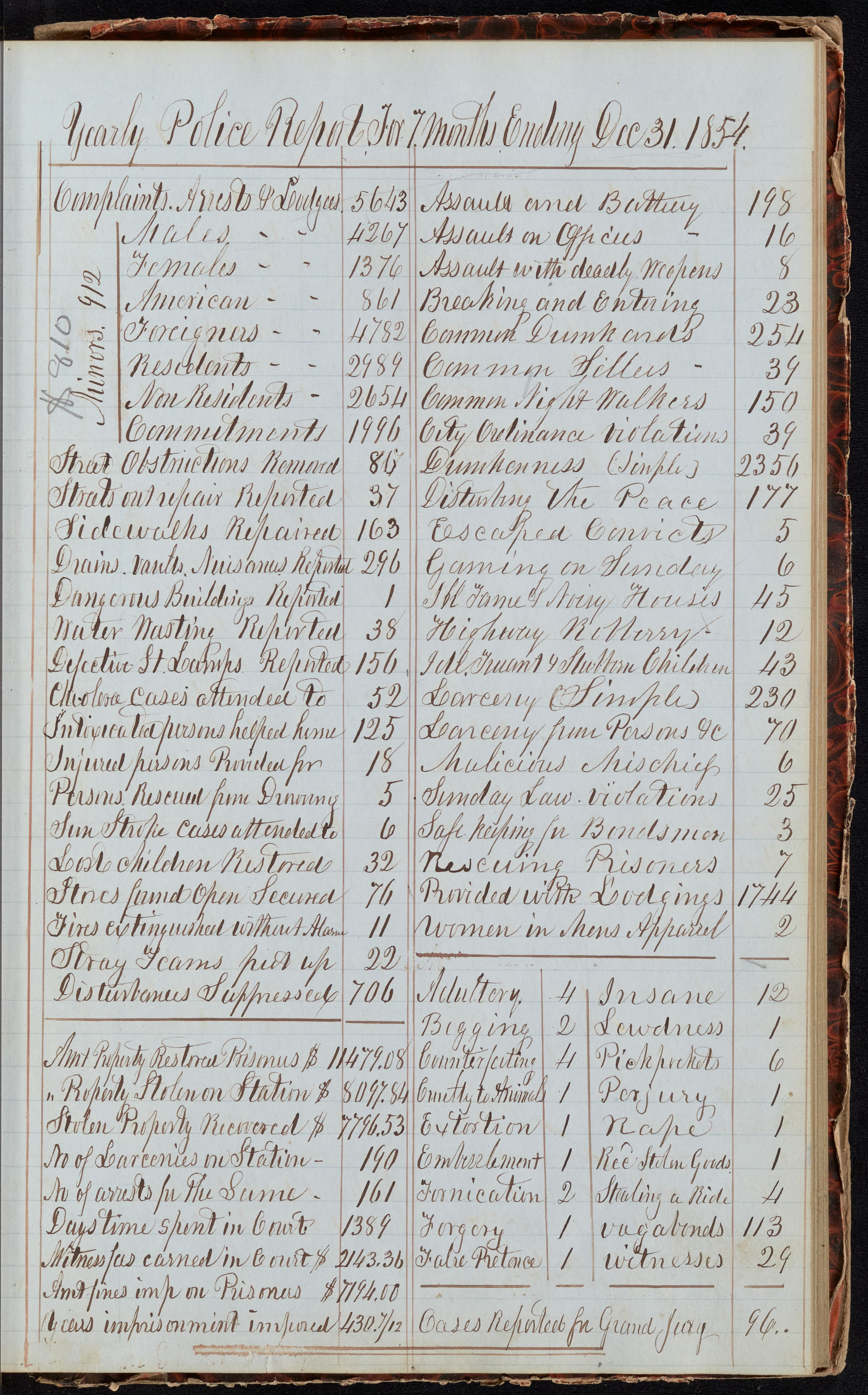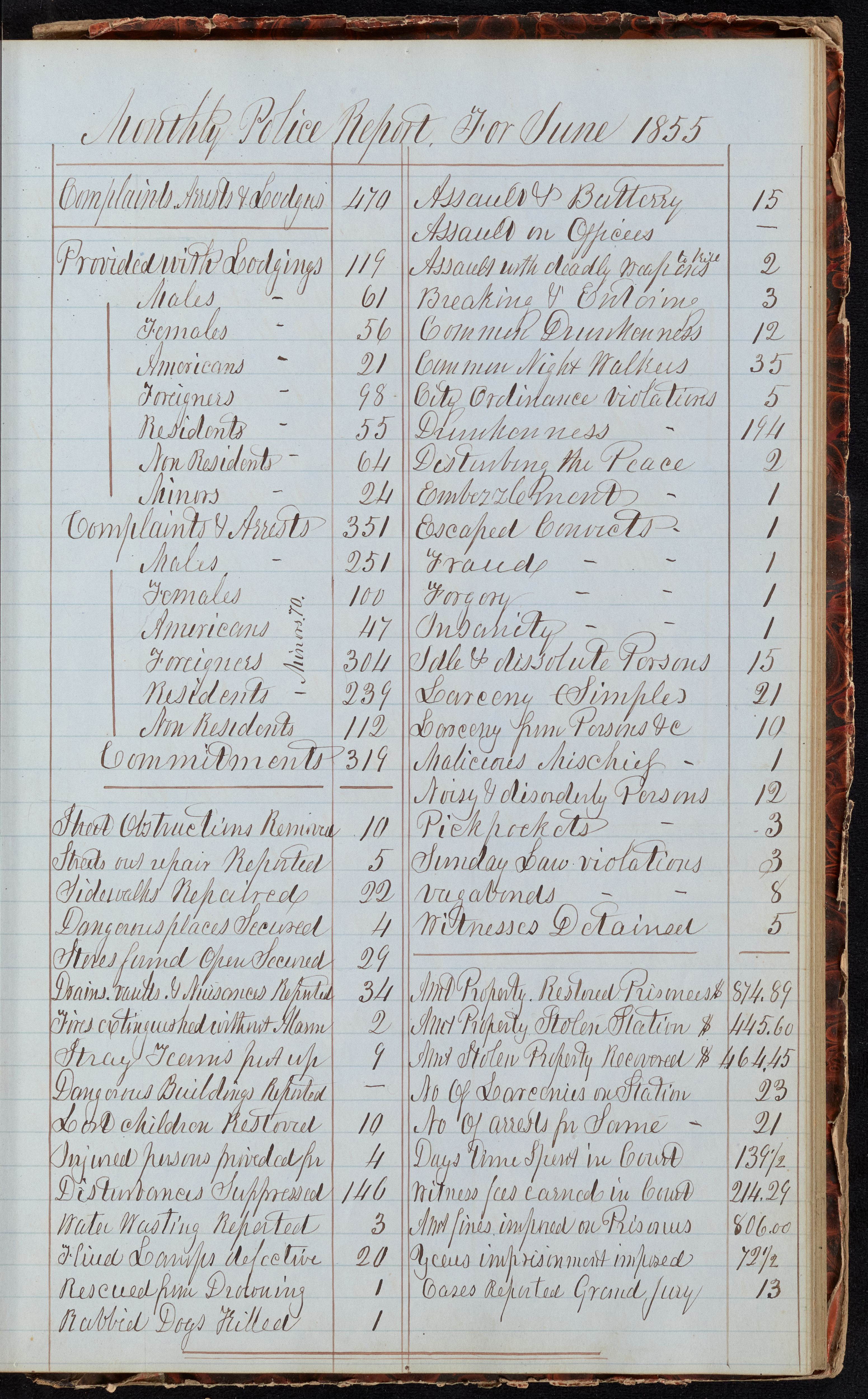The primary source for this project is the Boston Police Station Number One (North End) Captain’s record book, 1854-1859, located in and digitized by the Burns Library at Boston College. The record book was kept by Edward Hartwell Savage, the then captain of the Boston Police Station Number One, which corresponds to the North End neighborhood in Boston in late 19th century (For more details check About Captain Savage).
Boston Police Department was established in May 1854, and the record book starts in June 1854. Thus, this record book documents the police activity of the first professionally established police department in Boston.
The ledger includes:
- Monthly report of arrests and public service duties conducted by the police (more on this in the Data section)
- Yearly reports summarizing the same data as above
- Names and address of the then active police officers
- Inventory of businesses and types of stores in North End for a select years. (For instance, how many tailor shops in the area under police station, etc.)
- Hierarchical structure of police during this time with the names of officers holding the top offices, including the mayor of the city of Boston.
- Drawings of the official police badge.
 |
 |
| Image showing the official police badge of the newly formed police department | An instance of the Yearly Reports as found in the document |
- Monthly report of arrests and public service duties conducted by the police (more on this in the Data section). These are presented as follows:

One can see that the top left quadrant of the image highlights the demography of the arrests and lodgings provided. For more details on how we use pages like these and turn them into a dataset, please visit the Data page.
Why is this archival record important?
Captain Savage’s ledger isn’t just another old record book – it’s a goldmine of information that you simply can’t find anywhere else. Here’s why this collection matters:
-
Unique data that’s impossible to find elsewhere. While we know the broad strokes of how Boston’s police department was formed in 1854, Captain Savage’s day-to-day records show us what actually happened on the streets. This isn’t history written by officials looking back – it’s the real-time documentation of how America’s early police forces actually worked.
-
Incredibly detailed and well-organized records. Savage was meticulous about his record-keeping. His ledger gives us a systematic look at arrests, crimes, and public services in Boston’s North End during the 1850s. The level of detail is remarkable – you can see crime patterns and understand how the new police force was finding its footing.
-
A window into 1850s Boston life. Beyond just police work, these records capture daily life in one of Boston’s most vibrant neighborhoods. It is a part of the story of a city transforming from colonial town to modern metropolis.
-
Missing piece of American policing history. The Burns Library dataset from 1855-59 covers those crucial early years when cities across America were figuring out how to do modern policing. Boston was among the first, and Captain Savage’s records show us how they actually made it work.
Whether you’re a history buff, a student researching 19th-century America, or just someone curious about how Boston became the city it is today, Captain Savage’s ledger offers insights you won’t find in any textbook.